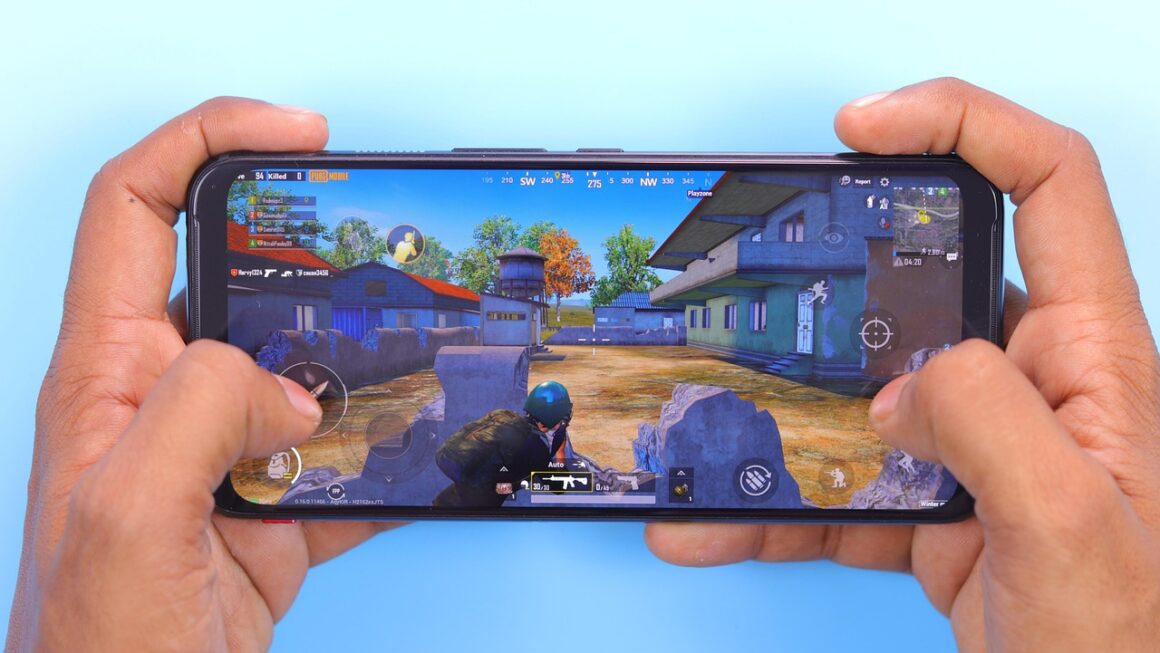Game design is more than just crafting fun experiences; it’s a multidisciplinary art that blends creativity, psychology, and technical prowess. From conceptualizing the core mechanics to balancing gameplay and designing compelling narratives, game designers are the architects of virtual worlds that captivate and engage players. This intricate process requires a deep understanding of player motivations, iterative testing, and a keen eye for detail. Let’s delve into the fascinating world of game design and explore the key elements that contribute to creating memorable gaming experiences.
Understanding the Core Pillars of Game Design
Core Mechanics & Gameplay Loops
The foundation of any game lies in its core mechanics. These are the fundamental actions that players perform, the rules that govern those actions, and the systems that emerge as a result. A well-defined gameplay loop is crucial for keeping players engaged.
- Example: In a platformer like Super Mario Bros., the core mechanic is jumping. The gameplay loop involves running, jumping, collecting coins, defeating enemies, and reaching the goal.
- Actionable Takeaway: Start with a simple, engaging core mechanic and build upon it iteratively. Consider the long-term appeal of your gameplay loop.
Game Genres and Target Audience
Understanding your target audience is essential for effective game design. Different genres cater to different player preferences, skill levels, and expectations.
- Examples:
RPG (Role-Playing Game): Focuses on character progression, narrative depth, and exploration. The Witcher 3 is a prime example.
FPS (First-Person Shooter): Emphasizes fast-paced action, aiming skills, and competitive multiplayer. Call of Duty and Valorant are popular choices.
Puzzle Games: Challenges players’ problem-solving abilities with intricate and logical puzzles, like Portal or The Witness.
- Actionable Takeaway: Research your target demographic. Understand their gaming habits, preferences, and motivations. Tailor your game’s design to resonate with their needs. Consider conducting market research to understand the current landscape.
Defining the Game’s Scope
Scope refers to the breadth and depth of your game. It’s crucial to define a realistic scope early in the development process to avoid overambitious projects that can lead to delays, budget overruns, and ultimately, a less polished product.
- Tips for Defining Scope:
Start small: Begin with a minimum viable product (MVP) that showcases the core mechanics and gameplay loop.
Prioritize features: Identify the essential features that are crucial to the core experience and focus on implementing them first.
Set realistic deadlines: Break down the project into smaller, manageable tasks with clear deadlines.
- Actionable Takeaway: Be honest about your team’s capabilities and resources. Avoid scope creep by carefully evaluating any new feature requests.
Crafting Compelling Narratives and Worlds
Storytelling Techniques in Game Design
A compelling narrative can significantly enhance the player experience. Effective storytelling techniques in game design include:
- Environmental Storytelling: Using the game’s environment to convey narrative information, such as abandoned settlements or cryptic murals.
- Character Development: Creating memorable and relatable characters with believable motivations and flaws.
- Branching Narratives: Allowing players to make choices that affect the story’s outcome, enhancing their sense of agency.
- Example: Disco Elysium is renowned for its deep character development and complex branching narrative.
- Actionable Takeaway: Plan your narrative carefully, considering the pacing, character arcs, and player agency. Use a mix of storytelling techniques to engage players on multiple levels.
Worldbuilding and Lore
Creating a believable and immersive game world requires careful worldbuilding. Consider the history, culture, geography, and mythology of your world.
- Worldbuilding Elements:
History: A detailed history adds depth and context to the game world.
Culture: Distinct cultures create diversity and intrigue.
Geography: Varied landscapes can offer unique gameplay opportunities.
Mythology: Compelling myths and legends can add a layer of mystery and wonder.
- Example: The Elder Scrolls series features rich lore and a vast, detailed world that encourages exploration.
- Actionable Takeaway: Develop a comprehensive world bible that documents all aspects of your game world. This will help maintain consistency and inspire new ideas.
Balancing Gameplay and Player Experience
Difficulty Curves and Progression Systems
Balancing the game’s difficulty is crucial for keeping players engaged without frustrating them. A well-designed difficulty curve gradually increases the challenge as players progress.
- Considerations:
Player Skill Levels: Cater to different skill levels by offering adjustable difficulty settings.
Progression Systems: Implement rewarding progression systems that unlock new abilities, items, or content.
Feedback Mechanisms: Provide clear feedback to players about their performance, such as health bars, damage numbers, or tutorial messages.
- Example: Dark Souls is known for its challenging but fair difficulty, which rewards persistence and skill.
- Actionable Takeaway: Test your game extensively to identify areas that are too easy or too difficult. Use player feedback to fine-tune the difficulty curve.
User Interface (UI) and User Experience (UX) Design
A well-designed UI/UX is essential for creating a user-friendly and intuitive gaming experience.
- UI/UX Principles:
Clarity: Ensure that all UI elements are easy to understand and navigate.
Accessibility: Make the game accessible to players with disabilities by offering customizable controls, subtitles, and colorblind modes.
Consistency: Maintain a consistent visual style and layout throughout the game.
Responsiveness: Ensure that the game responds quickly and smoothly to player input.
- Example: The Last of Us Part II features a highly accessible UI/UX, with numerous customization options for players with different needs.
- Actionable Takeaway: Conduct usability testing to identify any pain points in the UI/UX. Iterate on your design based on player feedback.
Game Testing and Iteration
Game testing is an ongoing process that involves gathering feedback from players and using it to improve the game.
- Testing Methods:
Playtesting: Observe players as they play the game and gather their feedback.
A/B Testing: Compare different versions of the game to see which one performs better.
Usability Testing: Evaluate the game’s UI/UX to identify any usability issues.
Focus Groups: Gather feedback from a group of players who represent the target audience.
- Actionable Takeaway: Start testing your game early and often. Use player feedback to iterate on your design and improve the overall gaming experience. Keep detailed records of your testing results and use them to inform your design decisions.
Tools and Technologies in Game Design
Game Engines
Game engines are the software frameworks that provide the tools and functionalities needed to create games.
- Popular Game Engines:
Unity: A versatile engine suitable for 2D and 3D games, with a large community and extensive asset store. Used for games like Hollow Knight and Genshin Impact.
Unreal Engine: A powerful engine known for its high-fidelity graphics and advanced features. Used for games like Fortnite and The Witcher 3.
Godot Engine: A free and open-source engine that is gaining popularity for its ease of use and flexibility.
- Actionable Takeaway: Choose a game engine that aligns with your project’s requirements and your team’s skillset. Experiment with different engines to find the one that best suits your needs.
Level Design Tools
Level design tools are used to create and edit the game’s environments.
- Examples:
Unity’s ProBuilder and ProGrids: Tools for creating and editing 3D models within the Unity engine.
Unreal Engine’s Level Editor: A powerful editor for creating detailed and immersive environments.
Tiled: A popular 2D level editor that supports multiple tilemap formats.
- Actionable Takeaway: Learn to use level design tools effectively to create engaging and visually appealing environments. Pay attention to the layout, lighting, and atmosphere of your levels.
Programming Languages
Programming languages are used to implement the game’s logic and functionality.
- Common Programming Languages:
C#: The primary language used in Unity.
C++: The primary language used in Unreal Engine.
GDScript: A scripting language developed for the Godot Engine.
- Actionable Takeaway: Choose a programming language that is well-suited for game development and that you are comfortable with. Learn the fundamentals of programming and apply them to your game’s logic.
Conclusion
Game design is a complex and rewarding field that requires a blend of creativity, technical skills, and player empathy. By understanding the core pillars of game design, crafting compelling narratives, balancing gameplay, and leveraging the right tools and technologies, you can create gaming experiences that captivate and engage players. Remember to iterate on your designs based on player feedback and always strive to learn and improve your skills. The world of game design is constantly evolving, so stay curious, experiment, and never stop creating.




